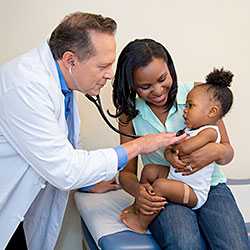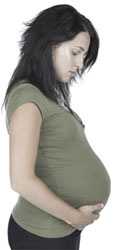Rubella and the Vaccine (Shot) to Prevent It

Doctors recommend your child get 2 doses of the MMR shot for best protection. Your child will need one dose at each of the following ages:
- 12 through 15 months and
- 4 through 6 years
Fact Sheet for Parents
Color [2 pages]
Español: Rubéola
The best way to protect against rubella is to get the measles-mumps-rubella shot (called the MMR shot). Doctors recommend that all children get the MMR shot.
Why should my child get the MMR shot?
The MMR shot:
- Protects your child from rubella, a potentially serious disease, as well as measles and mumps.
- Prevents your child from spreading rubella to a pregnant woman whose unborn baby could develop serious birth defects or die if the mother gets rubella.
- Prevents your child from getting a rash and fever from rubella.
- Keeps your child from missing school or child care (and keeps you from missing work to care for your sick child).
Is the MMR shot safe?
Yes. The MMR shot is very safe and effective at preventing measles, mumps, and rubella. Vaccines, like any medicine, can have side effects. Most children who get the MMR shot have no side effects.
What are the side effects?
Most children don’t have any side effects from the shot. The side effects that do occur are usually very mild, such as a fever, rash, soreness or swelling where the shot was given, or temporary pain and stiffness in the joints (mostly in teens and adults). More serious side effects are rare. These may include high fever that could cause a seizure.
Is there a link between the MMR shot and autism?
No. Scientists in the United States and other countries have carefully studied the MMR shot. None has found a link between autism and the MMR shot.
What is rubella?
Rubella, sometimes called “German measles,” is a disease caused by a virus. The infection is usually mild with fever and a rash. But, if a pregnant woman gets infected, she can have a miscarriage, her baby can die just after birth, or her unborn baby can develop serious birth defects.

Rubella is dangerous for a pregnant woman. If she gets rubella, she could have a miscarriage or her baby could be born with birth defects.
What are the symptoms of rubella?
In children, rubella usually causes the following symptoms that last 2 or 3 days:
- Rash that starts on the face and spreads to the rest of the body
- Low fever (less than 101 degrees)
Before the rash appears, older children and adults may also have:
- Swollen glands
- Cough, runny nose, and red
- Aching joints (especially in young women)
About half of the people who get rubella do not have symptoms.
Is it serious?
Rubella is usually mild in children. Complications are not common, but they occur more often in adults. In rare cases, rubella can cause serious problems, including brain infections and bleeding problems.
Rubella is most dangerous for a pregnant woman’s developing baby. Infection during pregnancy can cause miscarriage, or birth defects like deafness, blindness, intellectual disability, heart defects, and liver or spleen damage.
How does rubella spread?
Rubella spreads when an infected person coughs or sneezes.
The disease is most contagious when the infected person has a rash. But it can spread up to 7 days before the rash appears and up to 7 days after. People without symptoms can still spread rubella.
Where can I learn more about the MMR shot and my child?
To learn more about the MMR shot, talk to your child’s doctor, call 1-800-CDC-INFO or visit www.cdc.gov/vaccines/parents.
For more in-depth information about rubella, visit www.cdc.gov/rubella.
The Centers for Disease Control and Prevention, American Academy of Family Physicians, and the American Academy of Pediatrics strongly recommend all children receive their vaccines according to the recommended schedule.
Fact Sheets for Parents
Diseases and the Vaccines that Prevent Them
- Page last reviewed: November 10, 2014
- Page last updated: November 10, 2014
- Content source:


 ShareCompartir
ShareCompartir